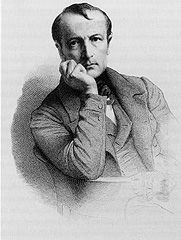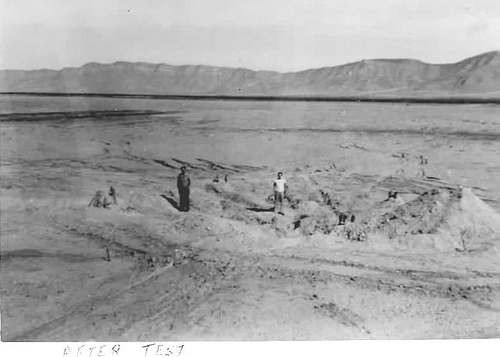
“From today painting is dead.” — Portraitist Paul Delaroche, on seeing an exhibition of daguerreotypes, 1839

“From today painting is dead.” — Portraitist Paul Delaroche, on seeing an exhibition of daguerreotypes, 1839
Tom and Dick were born on the same day of the same year to same mother and father. They look almost exactly alike, yet they are not twins. How can this be?
Gracie Allen: On my way in, a man stopped me at the stage door and said, “Hiya, cutie, how about a bite tonight after the show?”
George Burns: And you said?
Gracie Allen: I said, “I’ll be busy after the show, but I’m not doing anything right now.” So I bit him.
“All I had to do was say, ‘Gracie, how’s your brother?’ and she talked for 38 years,” Burns once remembered. “And sometimes I didn’t even have to remember to say, ‘Gracie, how’s your brother?'”

Ground zero after the first test of a nuclear weapon, July 16, 1945. Observers set up betting pools on the outcome, including these possibilities:
Physicist I.I. Rabi won — he predicted a blast equivalent to 18 kilotons of TNT.
Lloyd’s of London does not charge higher insurance rates for ships passing through the Bermuda Triangle. It says the area is no more dangerous than any other high-traffic piece of ocean.
The U.S. Coast Guard agrees.
Hobo lingo:

This conical tower, part of the Great Zimbabwe ruins of sub-Saharan Africa, has stood for a thousand years, and we may never learn what lies inside: The tower is 30 feet tall and has no windows or doors.
beblubbered
adj. disfigured by weeping
You can fool some of the people all of the time.
Perhaps inspired by Thomas Chatterton, the teenage Samuel William Henry Ireland (1777-1835) “found” an old deed with Shakespeare’s signature.
His father, a collector, was overjoyed, so Ireland went on finding more Shakespeareana — a promissory note, a declaration of Protestant faith, letters to Anne Hathaway and to Queen Elizabeth, books with notes in the margins and “original” manuscripts for Hamlet and King Lear.
Amazingly, these were all authenticated by experts of the day. Ireland wasn’t caught until at age 18 he wrote an entire “lost” play, which was mounted at Drury Lane Theatre. As a playwright, he couldn’t match the Bard, and Vortigern and Rowena closed after a single performance on April 2, 1796.
Sadly, his father took the blame, as no one could believe such a young man could pull off such a forgery. His son fled to France and died in obscurity.

Flames conduct electricity. Forest fires near high-voltage transmission lines can actually discharge them to the ground.